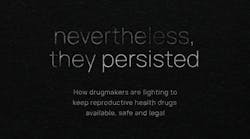For anyone involved in any type of manufacturing, Toyota is the "gold standard" for efficiency. After all, how many companies can honestly claim that 80% of their manufacturing time is spent on activities that actually add value to their product? (Many drug companies would consider themselves lucky to reach 10%). And the financial results are clear when you compare Toyota's situation with that of the other automakers.
But Toyota is becoming an inspiration to more drug companies struggling to get more from their manufacturing operations and to reduce the cost of goods sold. At SAP's Sapphire users group meeting last month, Ralf Haefli, head of global technical operations IT for Novartis, made the bold statement that his company intends to reduce cycle times, already down sharply, by 75% over the next three years. "That's not a typo, either," he joked. "It's all about speed and flexibility," he explained.
The way to increase speed, he said, is to look at key operational practices and apply Lean to eliminate waste. Achieving flexibility, however, is more a "people" issue. But the company is moving forward on both fronts. Its facility in Suffern, N.Y. is already something of model for operator empowerment...there are no team supervisors, teams are interdisciplinary and product-focused and the results they're seeing speak for themselves. Read here for more information on the initial project, which has advanced considerably since then. And now that Suffern model, or its key elements, are now being brought to the company's other facilities around the world.
Any of you struggling to get management buy-in for your next great business process reengineering program should study Novartis' approach. Instead of trying to "eat the elephant" and plunging headlong into new approaches, the company addresses problems very logically and breaks them down. It first piloted the new team model, its Lean Manufacturing program and PAT for one key product at one plant, assessed the results, and then rolled out the processes globally to other products and other plants.
In the process, Novartis is evolving into a "process oriented organization" (the acronym for which Novartis includes in its powerpoints, but which is most unfortunate in English---can you tell that I have young children at home?)
IT has helped make this happen, particularly the fact that Novartis was able to extend its ERP and connect it with its MES (aided by a partnership between MES supplier Werum and SAP). It's also leveraging IT and Lean with supply chain management to develop an adaptive supply chain.
We hope to cover this in greater detail later this year, but in the meantime check our brief coverage in May's issue, which will include a brief update on "connecting the enterprise" (a cliche that is finally becoming a reality in pharma) as well as an article on adaptive pharma supply chains by AMR analyst, Hussain Mooraj. Mooraj argues that greater collaboration is needed between distributors and manufacturers.
Latest from Home
Latest from Home





